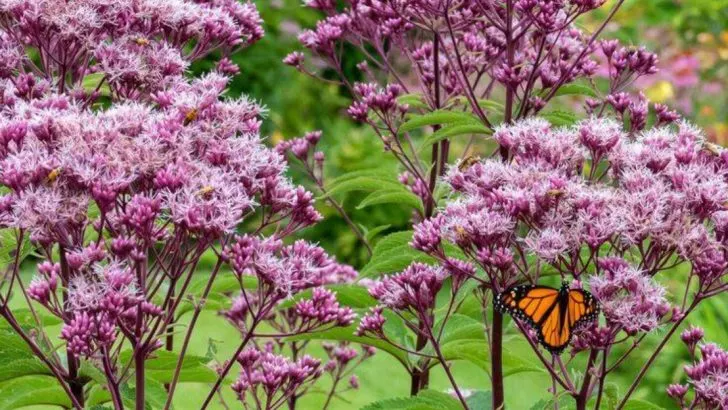Perennials are the backbone of any thriving garden, returning year after year with minimal effort. While popular choices like lavender and hostas dominate landscapes, many incredible perennials remain underappreciated. These overlooked plants offer unique beauty, resilience, and pollinator benefits that can enhance any garden. If you’re looking to diversify your flower beds, attract beneficial wildlife, or add seasonal interest, these 23 underused perennials deserve a spot in your garden.
Amsonia
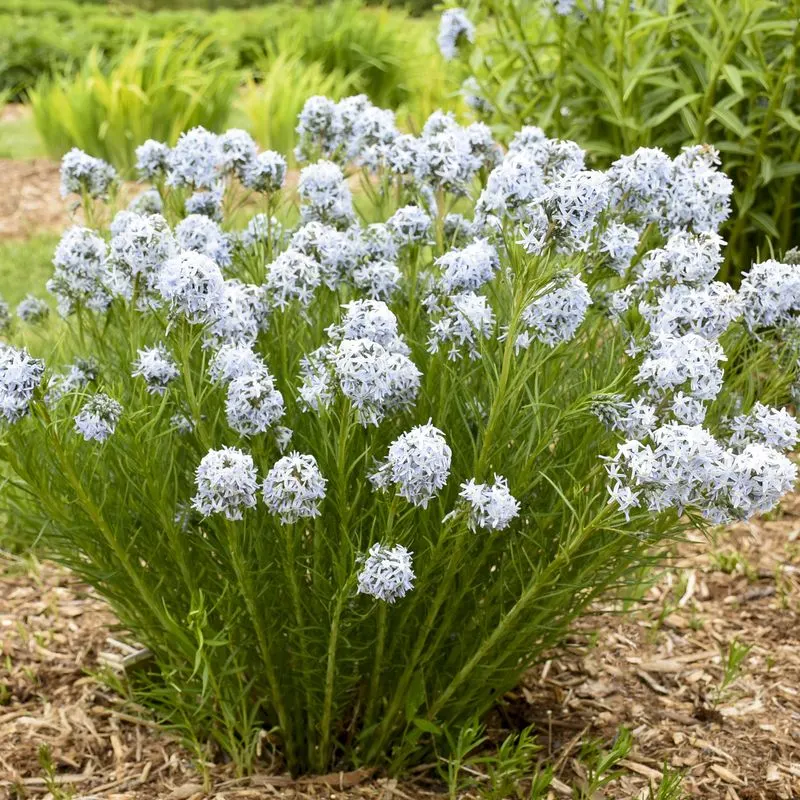
The delicate blue blooms of Amsonia create a soothing presence in any garden setting. With star-shaped flowers that appear in late spring, this perennial offers a gentle nod to the sky. Its feathery foliage turns a striking yellow in fall, extending its visual appeal throughout the season. Amsonia thrives in well-drained soil and can handle both full sun and partial shade. Perfect for borders, it pairs beautifully with other spring bloomers, adding a touch of elegance without overwhelming neighboring plants. Consider incorporating it into mixed beds for a harmonious blend of color and texture.
Brunnera
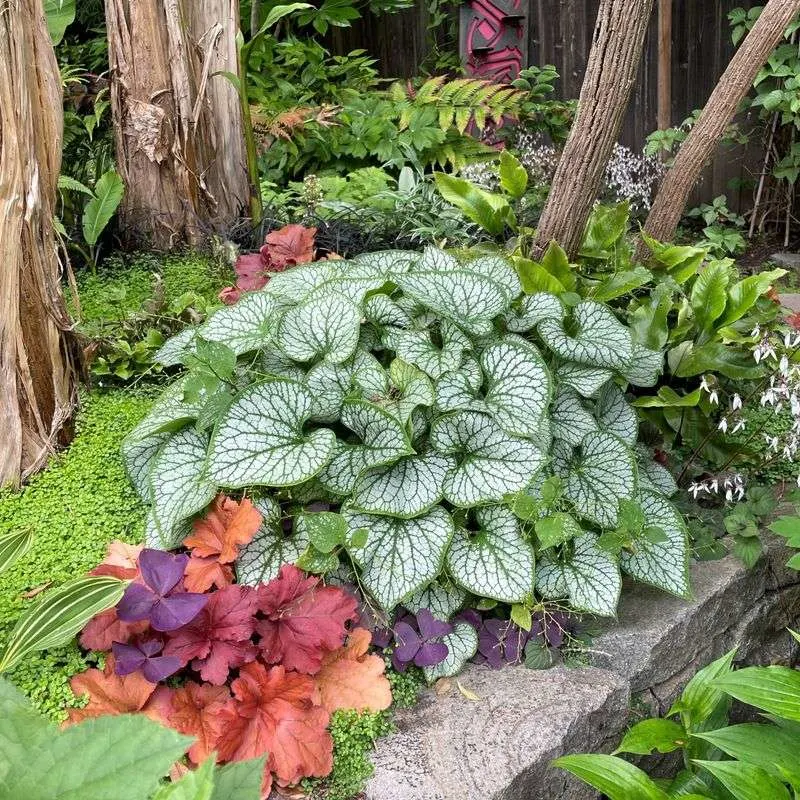
Known for its captivating foliage, Brunnera stands out with heart-shaped leaves that shimmer with a silver sheen. Come spring, delicate blue flowers akin to forget-me-nots emerge, offering a charming contrast. This perennial is ideally suited for shaded areas, where its cool hues brighten dim spaces. Low maintenance by nature, Brunnera prefers moist, well-drained soil and rewards gardeners with its resilience. It’s a superb choice for woodland gardens, where it complements ferns and other shade-loving perennials, weaving a tapestry of texture and color that enchants the eye.
Chelone
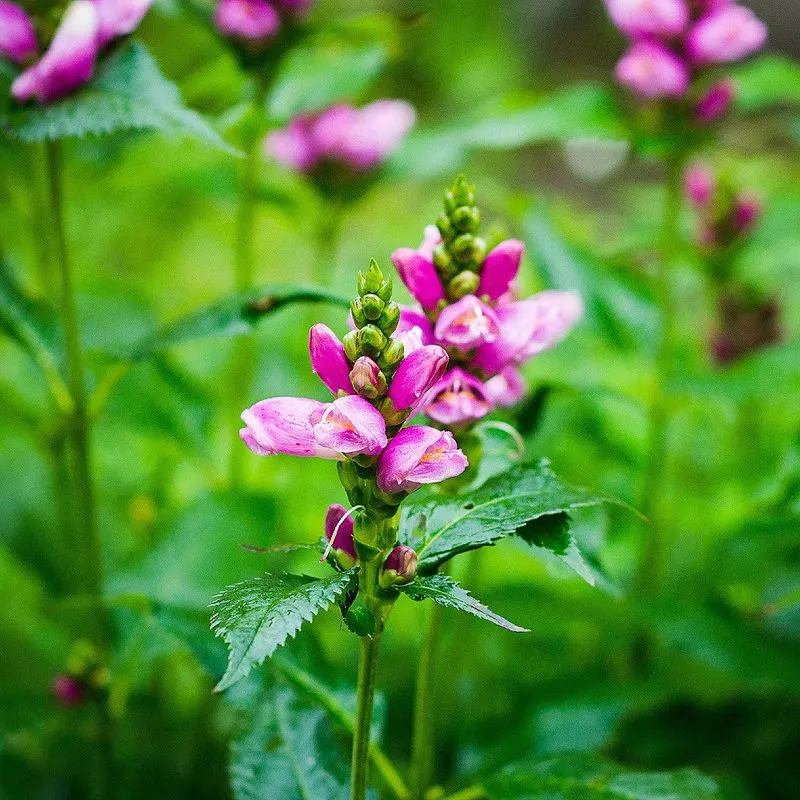
Chelone, with its snapdragon-like flowers, offers striking pink blooms that grace the garden in late summer. This perennial’s unique shape and vibrant color provide a refreshing twist to traditional garden palettes. Chelone is particularly suited to moist environments, thriving near ponds or in rain gardens. Its robust nature makes it an excellent choice for naturalizing areas where it can spread gracefully. Plant Chelone in masses for a bold statement or mix with other late-blooming perennials to enrich the garden’s texture and color. Its adaptability ensures it remains a favorite among keen gardeners.
Eupatorium
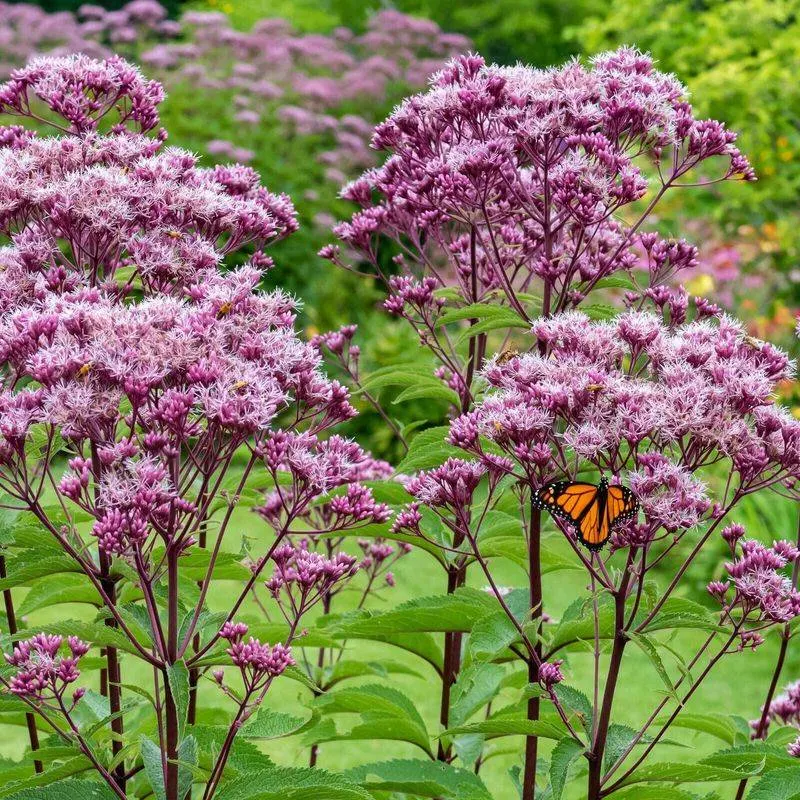
Eupatorium, commonly known as Joe-Pye weed, is a magnet for butterflies, thanks to its clusters of fragrant pink flowers. Towering over many garden plants, it provides vertical interest and a splash of color during late summer. Eupatorium thrives in moist, well-draining soils, making it a favorite for wetland areas or along water features. Despite its common name, Joe-Pye weed offers elegance and ecological benefits, supporting pollinators. It pairs well with grasses and other tall perennials, creating dynamic layers in garden design. Planting in groups amplifies its visual impact, making it an eye-catching feature.
Festuca
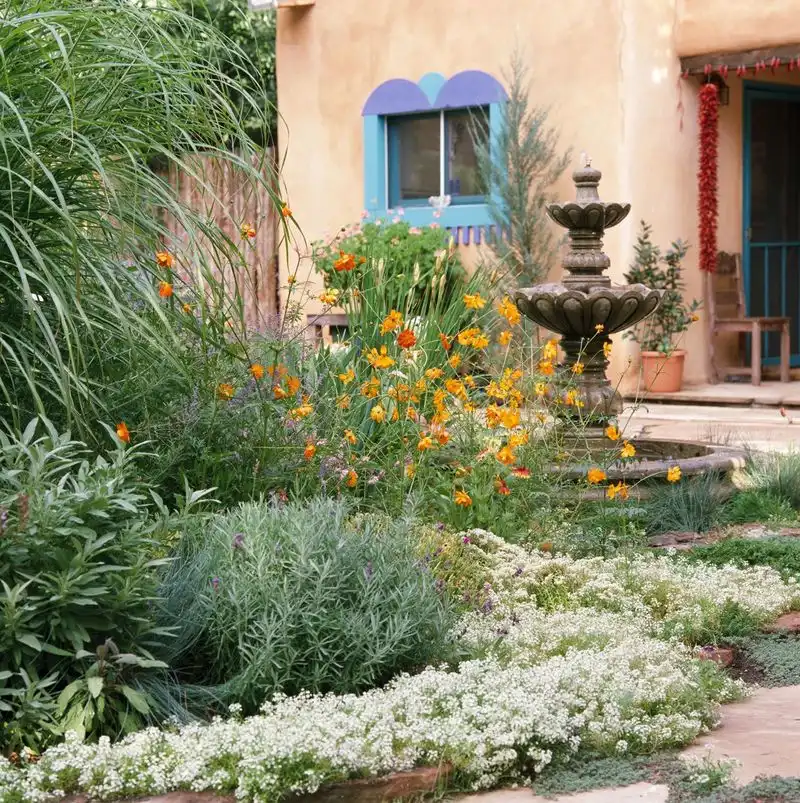
Festuca, or blue fescue, captivates with its fine, grass-like tufts that shimmer in silvery-blue hues. These soft mounds introduce movement and texture to sunny garden spots. Perfect for rock gardens or borders, Festuca endures heat and drought, thriving in well-drained soils. Its low-growing nature complements taller perennials, offering a subtle backdrop that enhances other colors. Festuca requires minimal maintenance, making it a practical yet aesthetic choice for busy gardeners. Consider mass planting for a meadow-like effect, or use as an accent plant to highlight architectural features in the landscape.
Gillenia
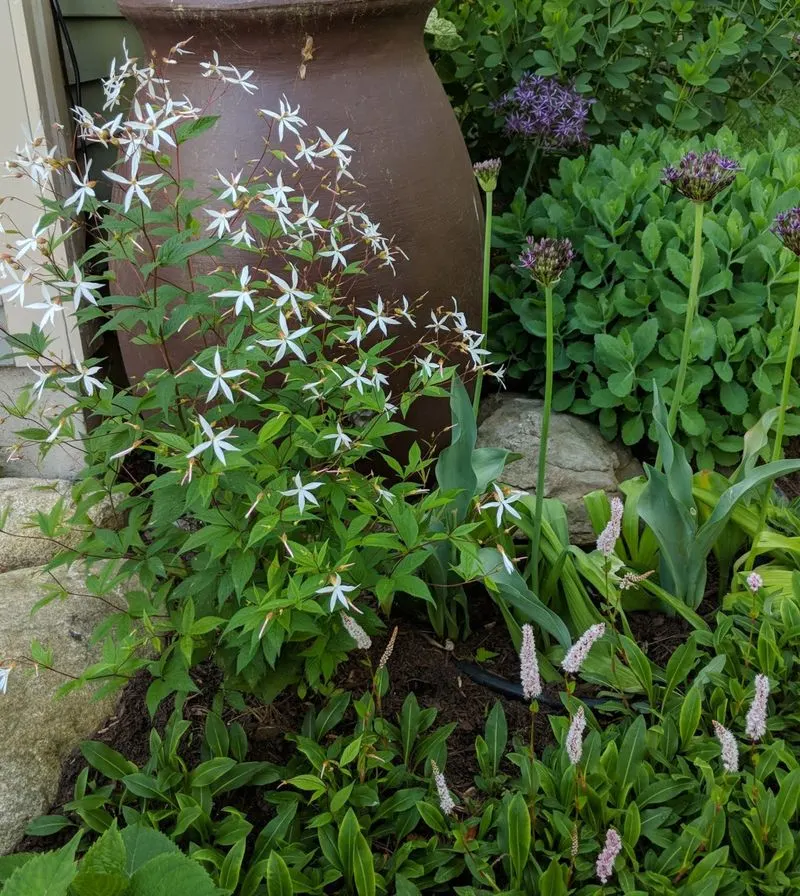
Gillenia, also known as Bowman’s root, enchants with its airy white blossoms that dance atop red-tinged stems. This perennial is a delight in woodland settings, where it thrives in dappled sunlight and well-drained soils. Gillenia’s delicate flowers appear in late spring, offering a subtle yet captivating show. Its graceful form and fine foliage make it an excellent choice for naturalistic plantings. Pair it with ferns or hostas to create a serene and cohesive garden scene. Its ability to blend seamlessly with other shade-loving plants ensures it remains a cherished addition to any landscape.
Helleborus
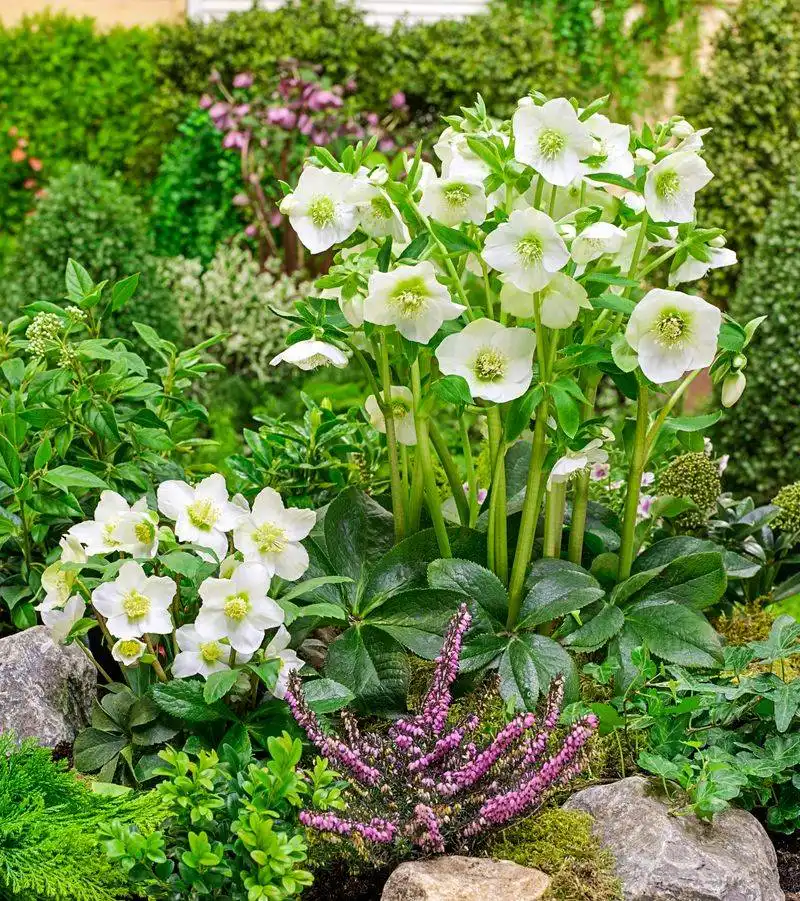
Helleborus, often called the Lenten rose, brings a touch of elegance to the winter garden with its nodding, cup-shaped flowers. Blooming in shades of pink and cream, it defies the cold, adding color when few others can. Ideal for shaded areas, Helleborus prefers rich, well-drained soil and rewards with evergreen foliage. This perennial thrives under deciduous trees, where it enjoys shelter and dappled light. Planting in clusters enhances its visual appeal, creating a charming display. As one of the first to bloom in late winter, it promises a garden experience filled with hope and renewal.
Iris ensata
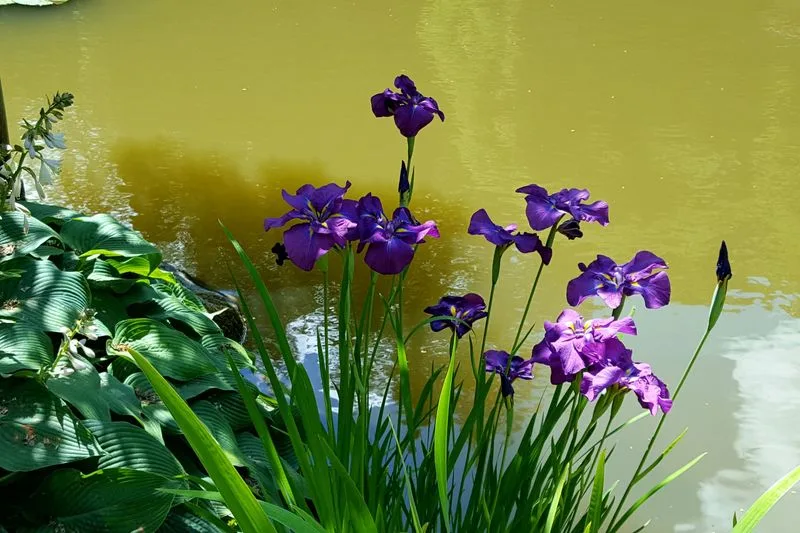
The Japanese iris, Iris ensata, stands out in water gardens with its dramatic purple blooms. These striking flowers rise gracefully above slender foliage, offering a vertical accent. Preferring moist conditions, it thrives at pond edges or in consistently damp areas. Its exquisite form makes it a focal point, drawing attention and admiration. Iris ensata pairs beautifully with other moisture-loving perennials, such as astilbes or hostas, to create lush, layered plantings. Their bold colors and distinctive shapes ensure they remain a memorable feature, adding a touch of the exotic to garden spaces.
Kirengeshoma
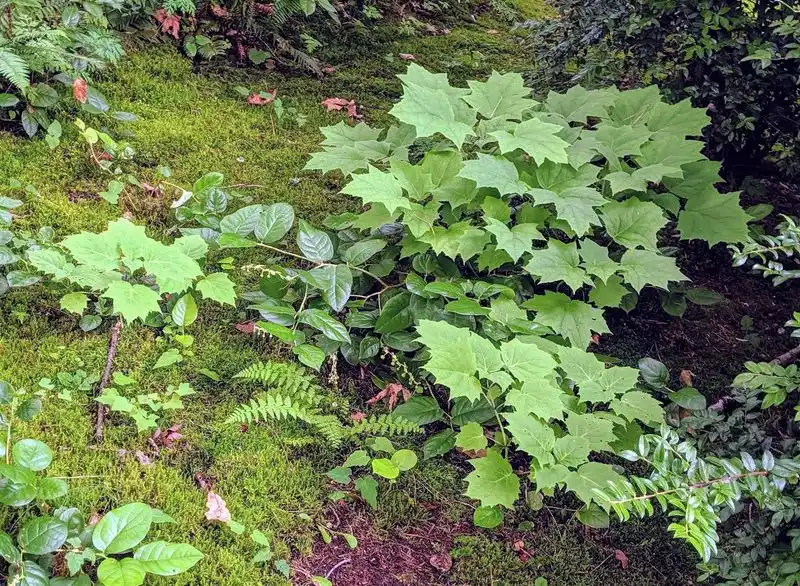
Kirengeshoma, a perennial often overlooked, captivates with its yellow, bell-shaped flowers. This unique plant thrives in shaded garden niches and provides a splash of color in late summer. Its lush green leaves create an appealing backdrop for its distinctive blooms. Ideal for woodland gardens, Kirengeshoma prefers rich, well-drained soils, where it can establish and spread comfortably. Pair with ferns and shade-loving shrubs for a cohesive, tranquil setting. Its unusual appearance not only adds interest but also invites curiosity, making it a delightful addition for gardeners looking to diversify their plant collections.
Leucojum
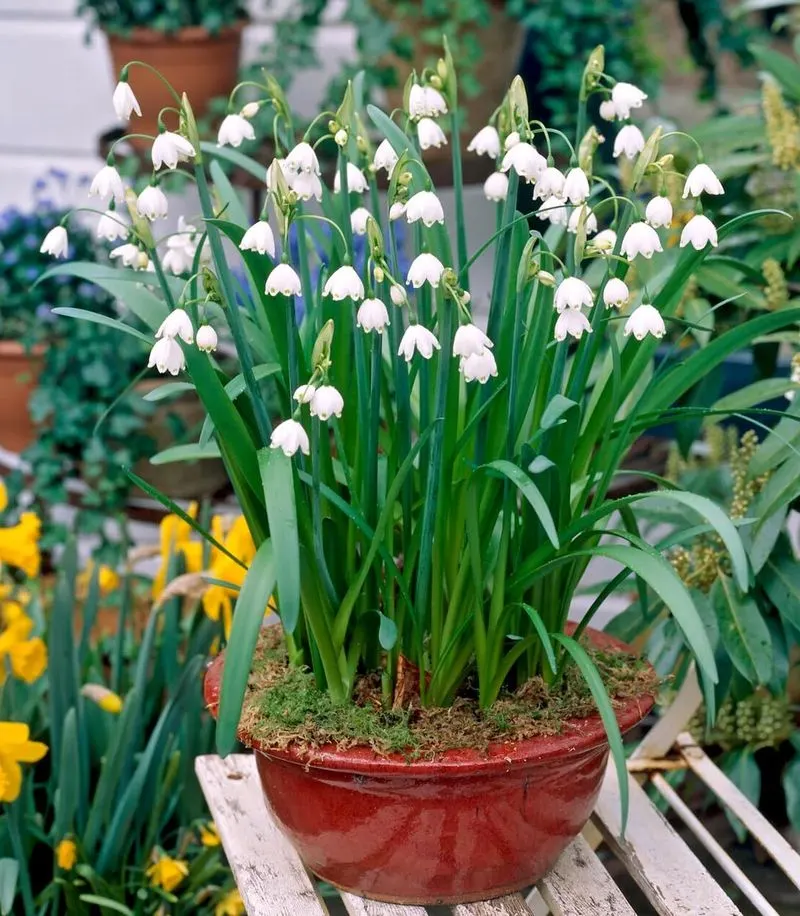
Leucojum, commonly known as snowflakes, captures the essence of spring with its nodding white flowers tipped with green. These elegant blooms appear in clusters, resembling dainty bells swaying gently in the breeze. Preferring moist, well-drained soils, Leucojum is perfect for naturalizing in meadows or along stream banks. Their resilience makes them easy to grow, and they require minimal care once established. Their subtle charm adds a whimsical touch to garden settings, blending effortlessly with other spring bulbs. Plant in masses for a striking effect, ensuring a delightful display as winter fades away.
Monarda
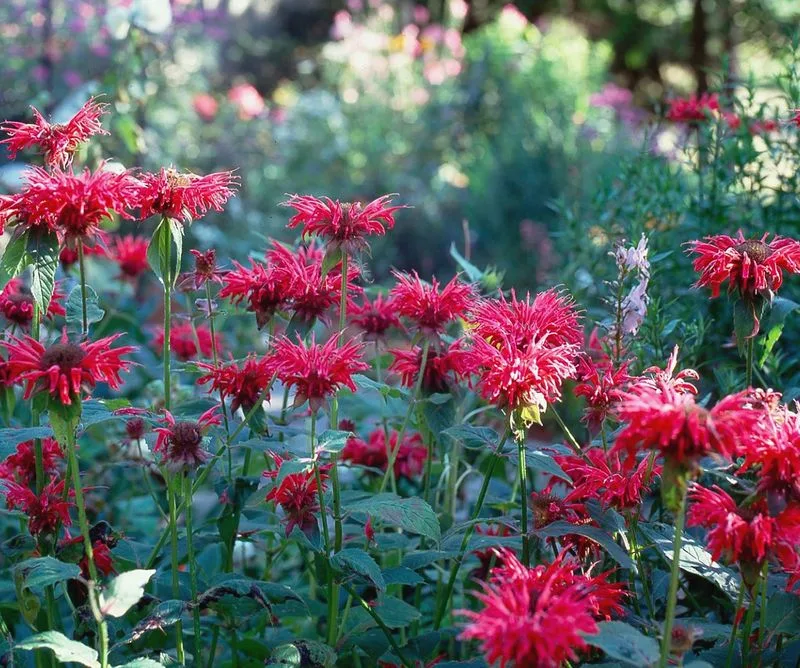
Monarda, or bee balm, is a vibrant addition to any pollinator-friendly garden. Its clusters of red, pink, and purple flowers attract bees, butterflies, and hummingbirds, making your garden a lively, buzzing haven. This perennial thrives in sunny locations and prefers rich, moist soil, although it can tolerate drier conditions once established. Its aromatic foliage adds another sensory layer to the garden, releasing a pleasant fragrance when brushed against. Monarda’s bold blooms make excellent cut flowers, bringing indoor spaces to life. Group plantings of Monarda create stunning visual impacts and support biodiversity.
Nepeta
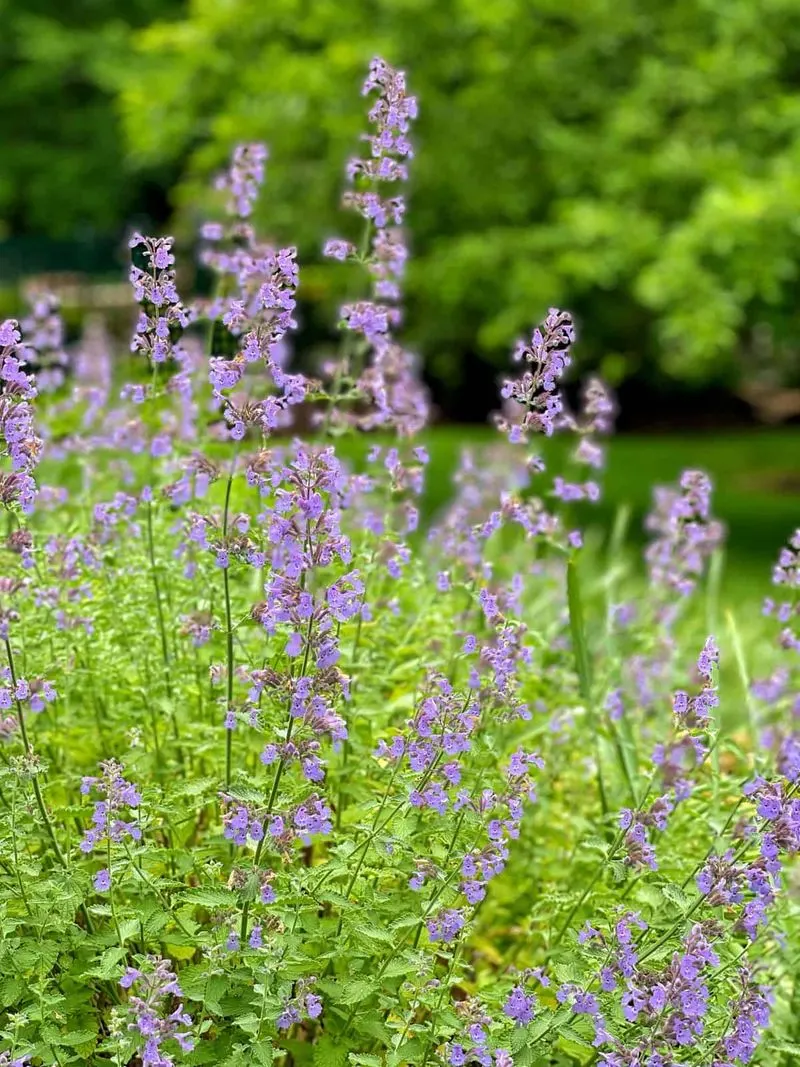
Nepeta, often known as catmint, is a gardener’s favorite for its lavender-blue flowers and aromatic foliage. Perfect for lining garden paths or filling borders, Nepeta thrives in well-drained soil and sunlit spots. This low-maintenance perennial blooms profusely from late spring into summer, offering long-lasting color. Its resilient nature makes it a reliable choice for challenging spots, flourishing even in poor soil. Nepeta’s soft, billowy appearance complements roses and peonies, adding a romantic touch to garden designs. Its fragrant leaves deter deer, making it a smart addition for gardens facing wildlife challenges.
Origanum
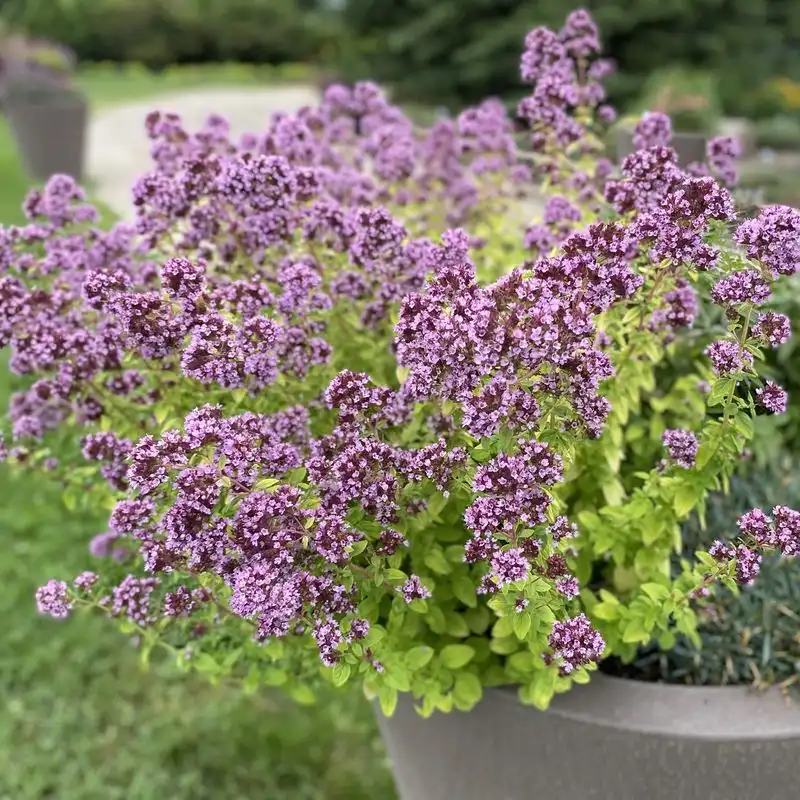
Origanum, or ornamental oregano, brings a Mediterranean flair to gardens with its purple flower spikes and gray-green leaves. This versatile perennial thrives in rocky, well-drained soils, where its aromatic foliage adds interest and texture. Ideal for sunny borders or container gardens, Origanum is drought-tolerant once established, making it a practical choice for dry landscapes. Its flowers attract pollinators, supporting garden ecology. Ornamental oregano’s cascading habit makes it perfect for softening edges or trailing over walls. Pair with other sun-loving perennials for a vibrant, cohesive display that evokes the warmth of southern climates.
Persicaria
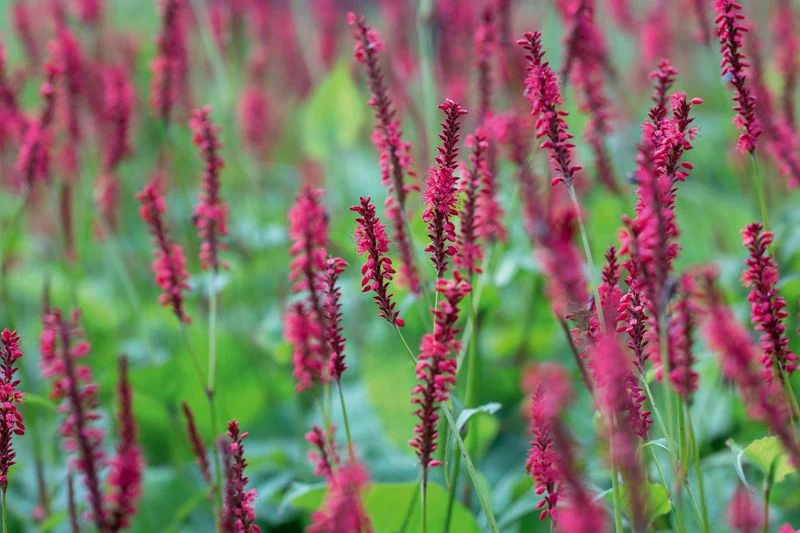
Persicaria, with its striking spikes of deep red flowers, adds drama and structure to cottage gardens. This sturdy perennial thrives in moist soils and full sun, making it an eye-catching addition to flower beds. Its lush foliage provides a dense backdrop for its vibrant blooms, creating a bold statement. Persicaria’s long flowering season ensures continuous color, while its adaptability allows it to integrate seamlessly into mixed borders. For best results, pair with other robust perennials like echinacea or rudbeckia. Its vigorous growth makes it ideal for filling gaps in garden designs, ensuring a lush, full appearance.
Pulmonaria
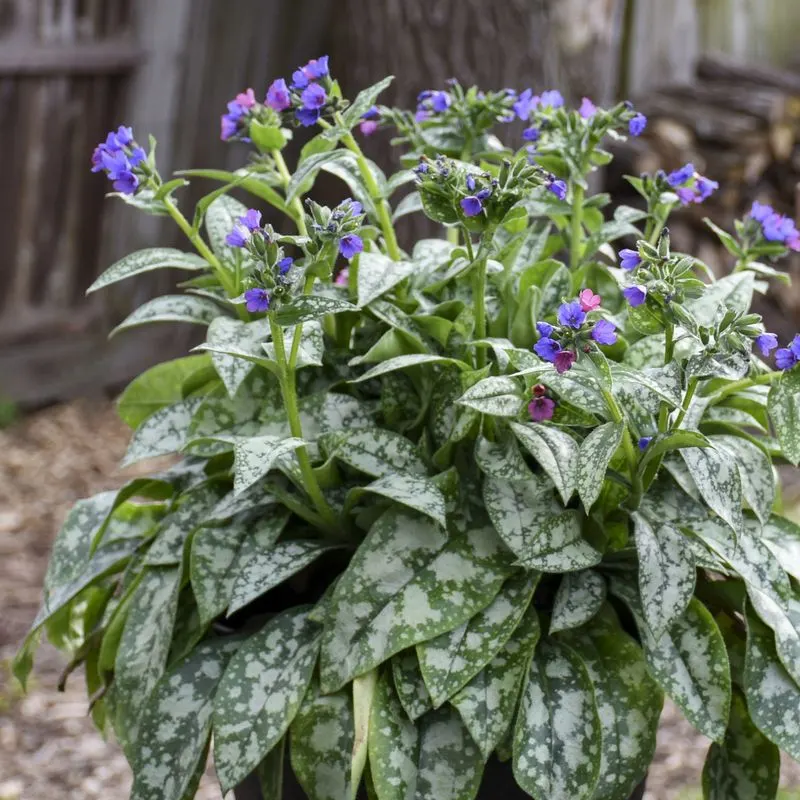
Pulmonaria, or lungwort, boasts speckled leaves that bring texture and interest to shaded garden areas. Its clusters of pink and blue flowers emerge in early spring, offering a cheerful burst of color. This perennial thrives in cool, shaded conditions, preferring moist, well-drained soils. Pulmonaria’s foliage remains attractive throughout the growing season, providing year-round appeal. It’s an ideal choice for shade gardens, where it complements hostas and ferns. The plant’s intriguing leaf patterns and vibrant blooms make it a standout feature, encouraging gardeners to explore creative combinations with other shade-loving plants.
Rodgersia
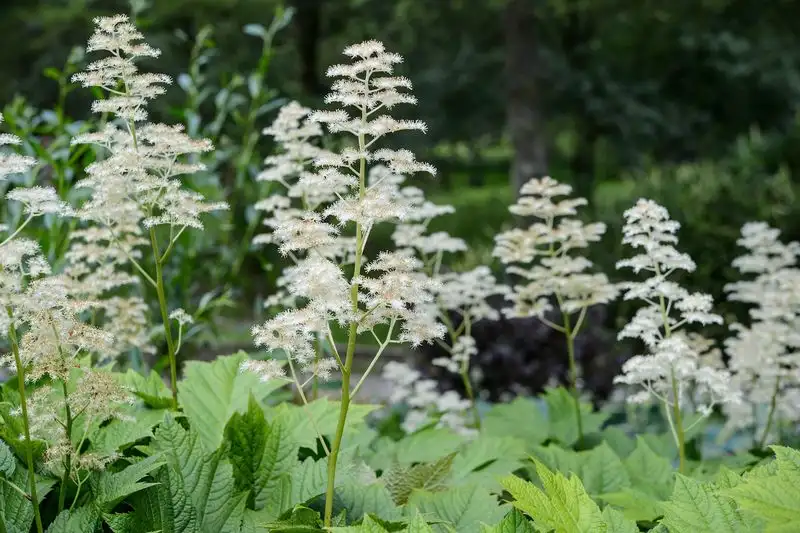
Rodgersia captivates with its large, textured leaves and creamy white plumes of flowers. This perennial thrives in moist, shaded environments, making it a perfect choice for pond-side plantings or woodland gardens. Its bold foliage adds structure and drama, while the flower plumes provide a soft contrast, swaying gently with the breeze. Rodgersia prefers rich, well-drained soils and benefits from regular watering, especially in dry spells. Pairing with ferns or hostas enhances its visual impact, creating a lush, layered garden scene. Its presence promises an architectural elegance that transforms ordinary spaces into extraordinary retreats.
Sanguisorba
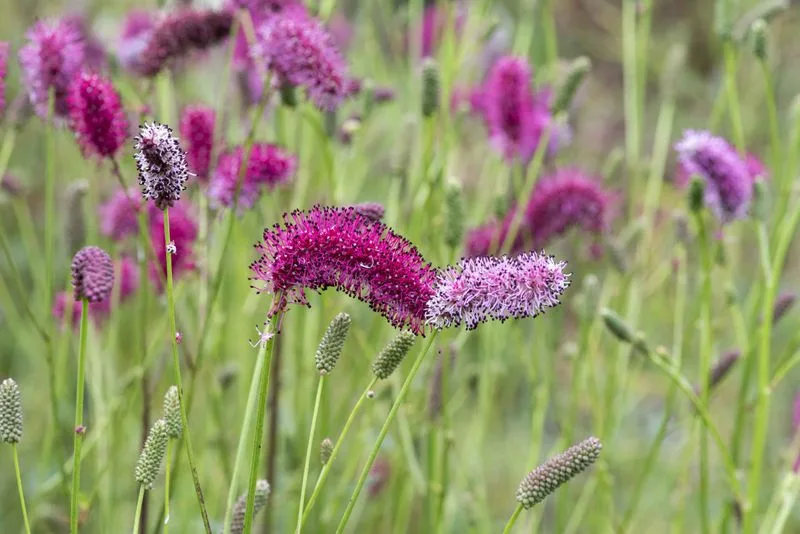
Sanguisorba, known for its feathery pink flower spikes, brings a whimsical touch to garden meadows. Its wavy foliage provides movement, creating a dynamic landscape. This perennial prefers full sun and moist, well-drained soils, thriving in naturalized settings. Sanguisorba’s airy flowers bloom from midsummer to fall, offering extended visual interest. Ideal for borders, it pairs beautifully with grasses and taller perennials, enhancing garden texture and diversity. Gardeners appreciate its resilience and low-maintenance nature, as well as its ability to attract pollinators. Its charm lies in its delicate appearance, promising a garden filled with lightness and grace.
Tiarella
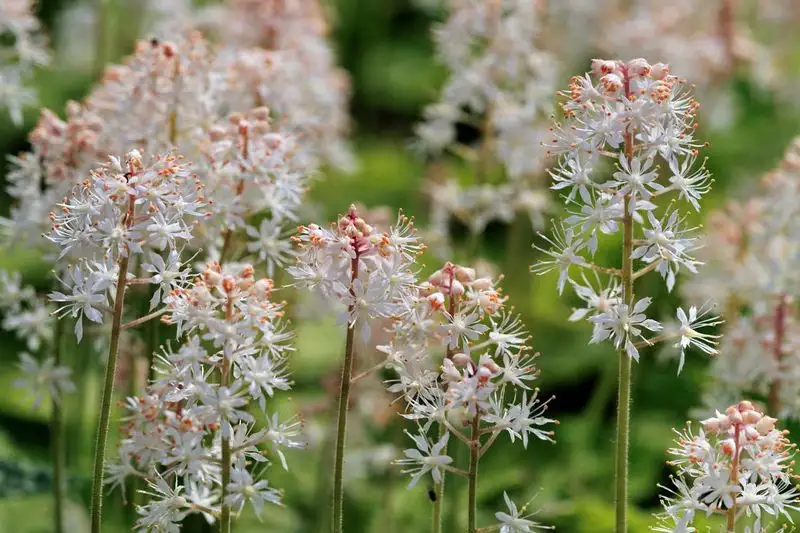
Tiarella, or foamflower, enchants with its frothy pink flower spikes that rise above intricately lobed leaves. Thriving in shaded areas, this perennial prefers moist, well-drained soil and provides a soft carpet of color. Tiarella’s foliage often displays dramatic markings, adding visual interest even when not in bloom. Ideal for woodland gardens or shady borders, it pairs well with ferns and hostas, creating a cohesive, serene landscape. The plant’s delicate flowers attract pollinators, enhancing garden biodiversity. Tiarella’s understated beauty and ease of care make it a favorite among gardeners seeking low-maintenance elegance.
Veronicastrum
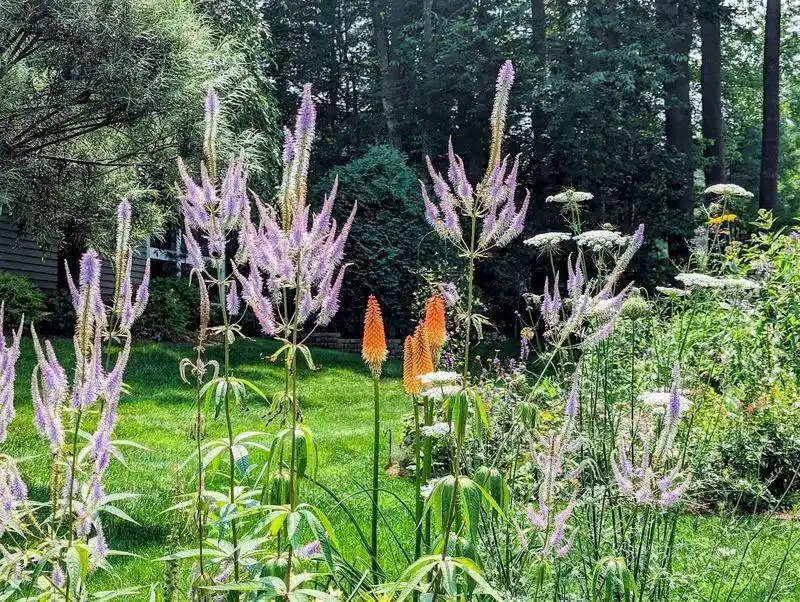
Veronicastrum, or Culver’s root, stands tall with its striking spires of pale blue flowers. This perennial adds vertical elegance to sunny gardens, where it thrives in moist, well-drained soils. Its architectural stature makes it a focal point in borders, drawing the eye skyward. Veronicastrum blooms in midsummer, offering a graceful show that lasts for weeks. It’s a favorite among pollinators, adding ecological value to garden spaces. Paired with grasses or other tall perennials, it creates a layered effect that enhances garden depth and interest. Its robust nature ensures it remains a staple in diverse garden designs.
Zizia
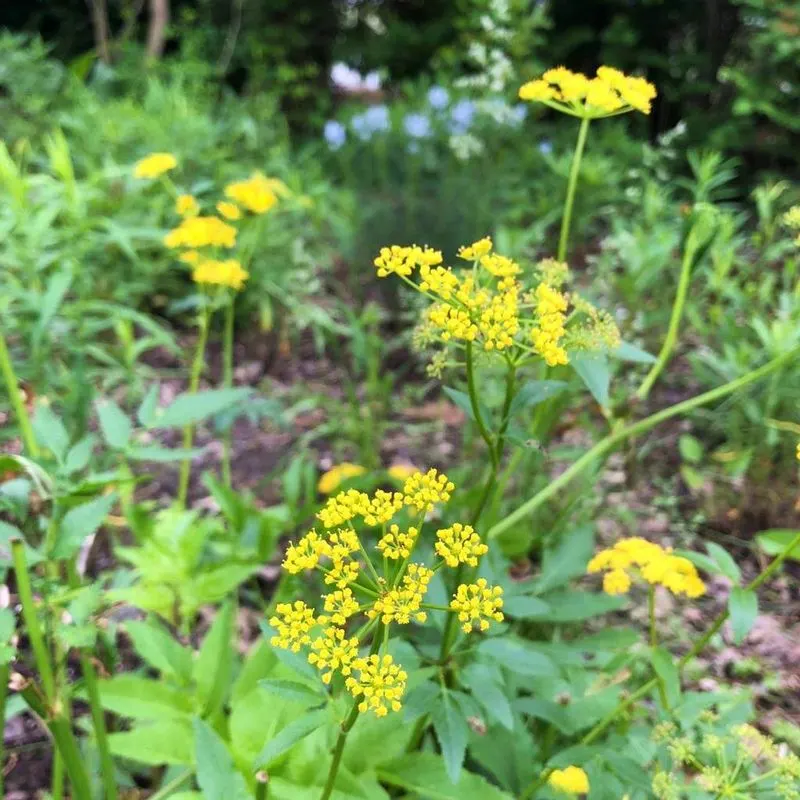
Zizia, with its flat-topped clusters of bright yellow flowers, brings a cheerful note to wildflower meadows. This native perennial thrives in full sun to partial shade, preferring moist, well-drained soils. Its lush green foliage provides a vibrant backdrop for its sunny blooms, which appear in late spring. Zizia is an excellent choice for naturalized plantings, where it complements other meadow species and supports pollinators. Ideal for gardeners looking to attract beneficial insects, its easy-going nature ensures it integrates effortlessly into established plantings. Zizia promises a garden brimming with life and color.
Baptisia
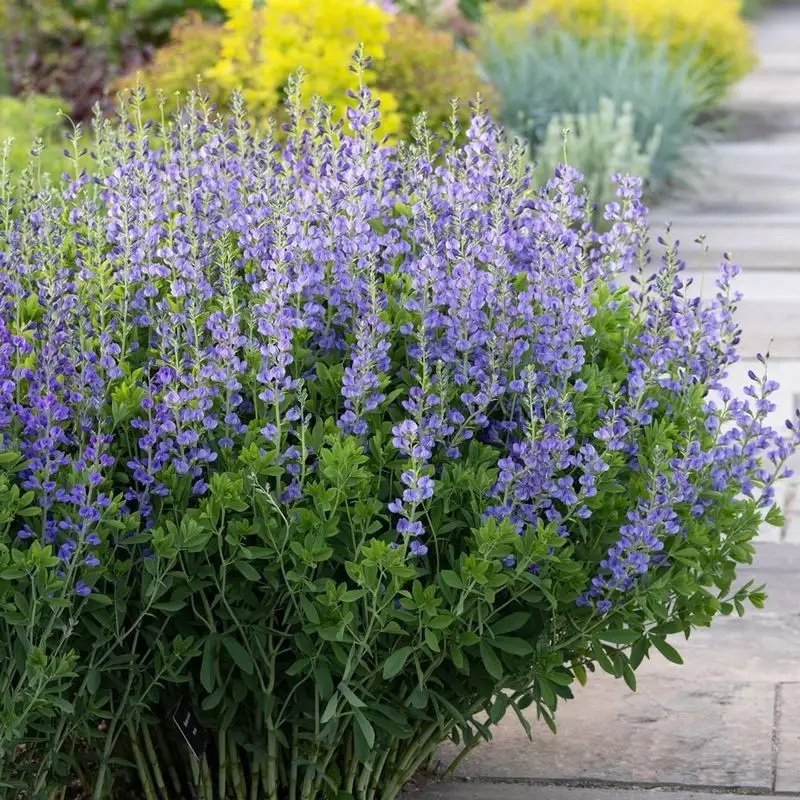
Baptisia, or false indigo, captivates with tall spikes of indigo flowers that rise above its bushy green foliage. This perennial thrives in sunny, well-drained locations and adds a touch of the prairie to gardens. Its deep root system makes it drought-tolerant once established, requiring minimal care. Baptisia’s blooms, appearing in late spring, are followed by decorative seed pods that extend its seasonal interest. It’s a versatile choice for borders or naturalistic plantings, where its bold colors and robust nature shine. Pair with grasses or other wildflowers for a cohesive, low-maintenance landscape that celebrates native beauty.
Actaea
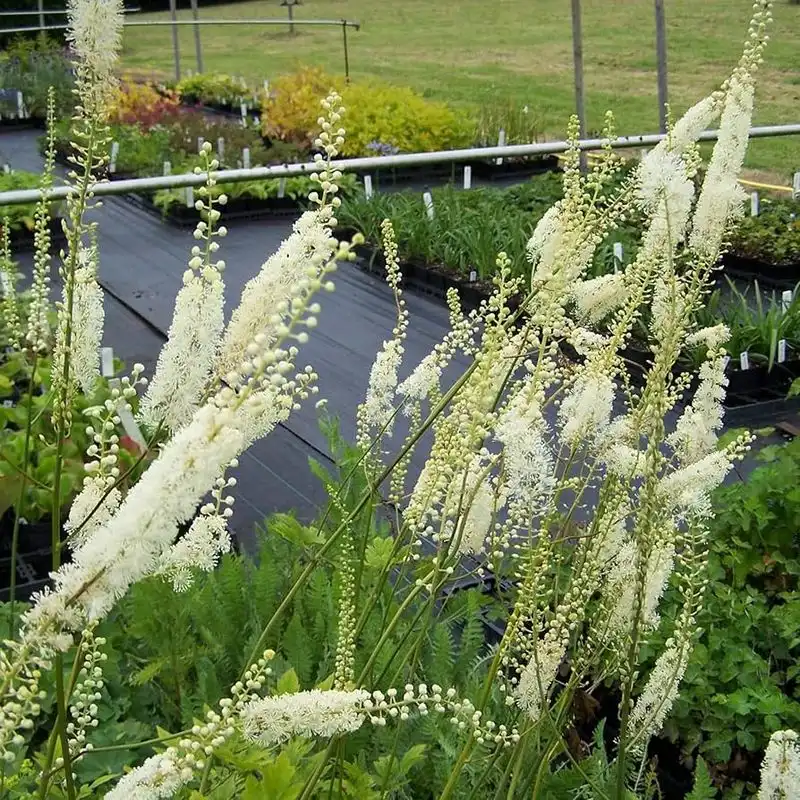
Actaea, known for its white, bottlebrush flowers, adds drama to shaded woodland gardens. This perennial thrives in rich, moist soils, where its dark foliage provides a striking contrast. Actaea’s flowers appear in late summer, offering a fragrant, ethereal presence that enhances quiet garden corners. Perfect for shady borders, it pairs beautifully with hostas and ferns, creating a lush and layered landscape. Its ability to attract pollinators adds ecological value, while its unique appearance ensures it remains a standout feature. Gardeners appreciate Actaea for its elegance and the serene atmosphere it helps cultivate.
Agastache
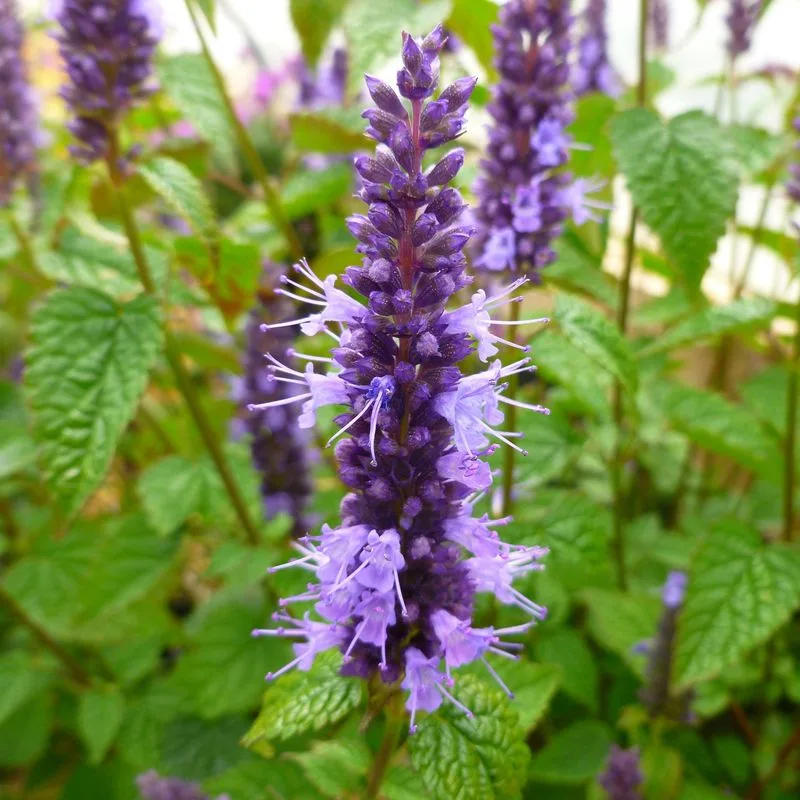
Agastache, or hyssop, delights with spiky purple flowers that attract a host of pollinators. Its aromatic leaves release a minty fragrance, adding another sensory dimension to garden spaces. This perennial thrives in sunny, well-drained soils and is drought-tolerant once established. Agastache’s long flowering season, from summer to fall, ensures continuous color and interest. Ideal for borders or herb gardens, its vibrant blooms pair well with other sun-loving perennials like echinacea or rudbeckia. Gardeners value Agastache for its resilience and ability to support biodiversity, making it a popular choice for eco-conscious landscapes.

